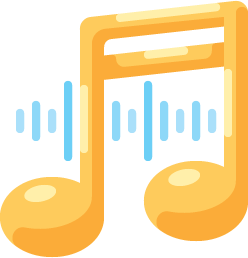When most people hear the phrase “reading sheet music,” their minds go to classical prodigies, childhood piano lessons, or old theory textbooks filled with mysterious symbols. There’s a widespread belief that reading music is an inherited talent — something you either “have” or don’t.
But here’s the truth: reading music is a learned skill, not a genetic gift. Just like reading a new language, it’s about structure, consistency, and mindset — not brilliance or early training.
The Illusion of Mystery
To the untrained eye, a page of sheet music might look overwhelming — like a dense forest of dots, stems, lines, and strange markings. But every symbol on that page has a purpose. There is no randomness in notation.
The trouble comes from how it’s often taught:
- Too fast
- Too abstract
- With little context or visual support
That’s where so many give up before they’ve even started. But what if you slowed it down? Broke it into layers? Saw it instead of memorizing it?
Learning to See, Not Just Memorize
Our brains are wired for patterns, not scattered information. That’s why we teach you to see music — not just to remember note names and values, but to recognize shapes, spacing, and structure.
We start with what’s familiar:
- High and low sounds
- Beats and natural rhythm
- Simple visual movement: up, down, repeat
Then we map these to the staff. Notes become motion, not math. Rhythm becomes flow, not arithmetic.
Build Foundations Before Complexity
Would you hand a novel to someone learning the alphabet? Of course not. Yet this is what traditional music teaching often does — expecting students to read complex pieces before they’ve internalized the basics.
Our philosophy:
- Learn the alphabet of music first — the notes, their positions, their spacing
- Then build the grammar — rhythm, patterns, groupings
- Then read words — short musical phrases
- Only then start reading complete musical sentences and full pages
This step-by-step structure transforms frustration into confidence.
The Visual Edge: Seeing Music Differently
One of the biggest breakthroughs in music reading comes from visual learning. Most people aren’t auditory learners — they remember better through images, colors, and spatial structure.
That’s why our lessons include:
- Color-coded charts to distinguish clefs, keys, and note durations
- Animations showing note-to-sound transitions
- Layered notation: from rhythm alone → to pitch alone → to combined reading
- Real sheet music from multiple styles: classical, pop, jazz, folk
It’s about developing music vision — a way of seeing notation as a living, flowing thing, not a static list of rules.
Confidence Through Repetition (The Smart Kind)
Repetition is vital, but it has to be designed intelligently. Drilling random note names isn’t useful — but revisiting functional chunks is.
For example:
- Reading two bars with similar rhythms builds recognition
- Comparing a C major scale to an A minor one reveals pattern logic
- Practicing sight-reading with graded levels builds smooth progress
The right kind of repetition doesn’t feel like repetition — it feels like progress.
What Happens When You Can Read
Let’s talk about what opens up when you can truly read music:
- You can join ensembles, bands, or choirs and follow along effortlessly
- You can pick up a new piece and learn it independently
- You can transcribe melodies from your head
- You can analyze your favorite music and understand its design
- You can finally compose with confidence
It’s not just practical — it’s liberating. You go from a passive listener to an active explorer of music’s hidden language.
It’s Never Too Late
Many of our learners are adults who thought they missed their chance. Some are parents learning alongside their kids. Others are musicians who’ve played by ear for years and want to finally understand what’s on the page.
No matter where you’re starting, it’s not too late. Music notation isn’t a locked gate. It’s a doorway — and the key is curiosity, consistency, and the right guidance.
Final Thought
Reading music isn’t a test of intelligence.
It’s not a talent you’re born with.
It’s a learnable, visual, joyful process — one that connects you more deeply to the music you already love, and gives you tools to go further.
At Music Theory Academy, we’re here to make sure you don’t just read notes — you understand them, hear them, and feel them come alive.

